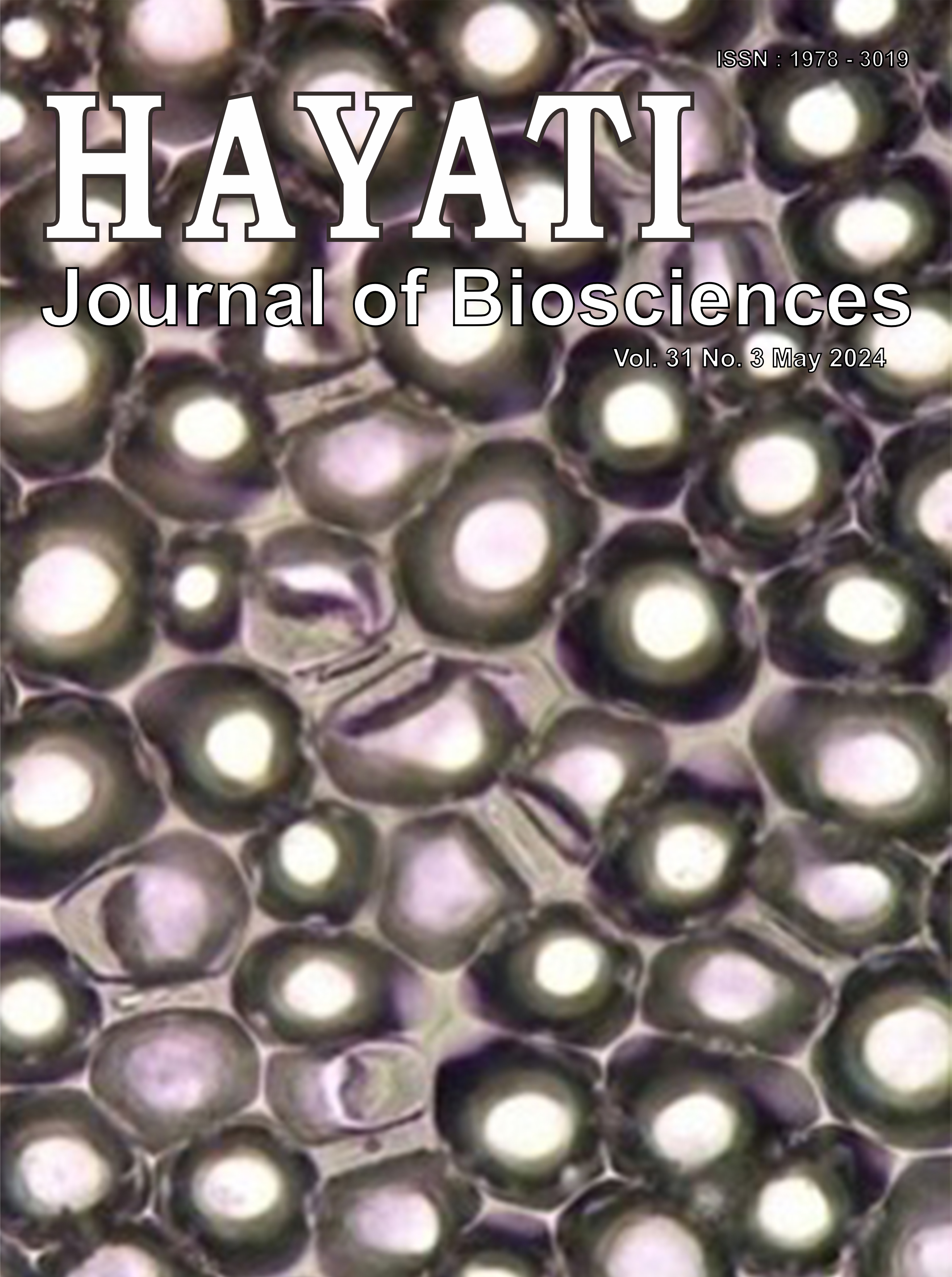Parang Romang (Boehmeria virgata (Frost.) Guill.): Correlation of Phytochemistry with Antioxidant and Xanthine Oxidase Inhibitory Activities
Abstract
Secondary metabolites such as phenolic and flavonoid from the plant are essential in their activity, especially activities related to the prevention of oxidation and the inhibition of xanthine oxidase. One plant that is believed to have prevention of oxidation and XOI and correlates with secondary metabolites is parang romang. The purpose of this study is to assess the antioxidant capacity and xanthine oxidase inhibitory activities of parang romang, and to examine their relationship with the TPC and TFC. Total phenolic and flavonoid were measured for all parts, and the DPPH, FRAP, and CUPRAC methods determined antioxidant capacity. The activity of xanthine oxidase inhibition was also assessed. Flavonoids, alkaloids, and coumarin were found in parang romang. The steroid/triterpenoid was found in the stem, leaves, and flower; saponin was in the roots and flower; quinone and tannin were only in the roots. The root gave the highest of TPC, while the flower had the highest TFC. The highest antioxidant capacity was found in roots, leaves, flowers, and stems. The highest xanthine oxidase inhibitory was given by leaves (9.74±0.14 µg/ml), followed by flower, steam, and rood. The correlation was shown between the phenolic and flavonoid quantities and the actions of antioxidants and xanthine oxidase inhibitors.
Downloads
Copyright (c) 2024 Muhammad Ikhlas Arsul, Irda Fidrianny, Muhamad Insanu

This work is licensed under a Creative Commons Attribution-NonCommercial 4.0 International License.
HAYATI J Biosci is an open access journal and the article's license is CC-BY-NC. This license lets others distribute, remix, tweak, and build upon author's work, as long as they credit the original creation. Authors retain copyright and grant the journal/publisher non exclusive publishing rights with the work simultaneously licensed under a https://creativecommons.org/

























.png) IPB University
IPB University Department of Biology
Department of Biology The Indonesian Biological Society
The Indonesian Biological Society 

